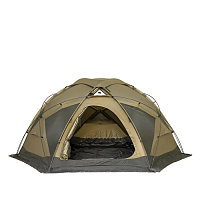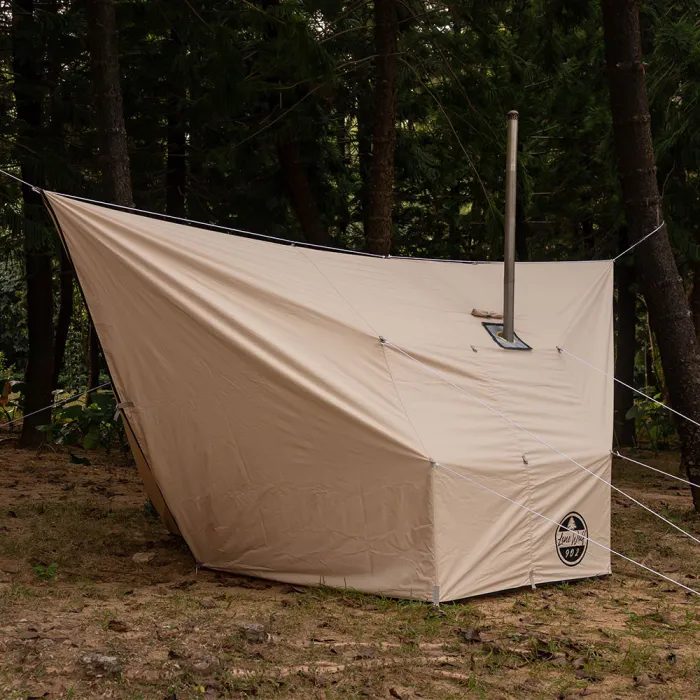Cart
How to Waterproof Your Camping Tent: Tips and Tricks
Introduction
When it comes to camping, having a waterproof tent is essential for staying dry and comfortable during outdoor adventures. Whether you're camping in rainy conditions or near bodies of water, proper waterproofing can protect your tent from moisture and extend its lifespan. In this article, we will provide you with valuable tips and tricks to effectively waterproof your camping tent, ensuring a dry and enjoyable camping experience.
1. Seam Sealing
Seams are one of the most common areas where water can enter your tent. Seam sealing is a crucial step in waterproofing your tent. Follow these steps:
- Clean the seams: Before sealing, make sure the seams are clean and dry. Use a damp cloth to remove any dirt or debris.
- Apply seam sealer: Using a brush or applicator, apply a thin and even layer of seam sealer along all the seams. Pay extra attention to the stitching and areas of potential water entry.
- Let it dry: Allow the seam sealer to dry completely according to the manufacturer's instructions. This process typically takes several hours.
2. Utilize Waterproofing Products
Various waterproofing products can enhance the water repellency of your tent fabric. Consider the following options:
- Silicone-based sprays: Silicone sprays create a water-repellent coating on the tent fabric. Apply the spray evenly on the rainfly and tent body, following the product instructions.
- Waterproofing solutions: Waterproofing solutions, such as Nikwax or Grangers, can be applied to the tent fabric. These solutions enhance the fabric's water resistance and maintain breathability.
- Seam sealant tape: In addition to seam sealing, you can reinforce the tent seams with seam sealant tape. This tape provides an extra layer of protection against water infiltration.
3. Check Zippers and Flaps
Zippers and flaps are potential entry points for water. Ensure they are properly maintained and protected:
- Inspect zippers: Check your tent zippers for any signs of damage or wear. Lubricate them with zipper lubricant or beeswax to keep them working smoothly and prevent water leakage.
- Manage flaps and vestibules: Make sure the rainfly and tent flaps are properly secured and cover the tent body completely. This prevents rainwater from seeping into your tent.
4. Tent Floor Protection
The tent floor is another critical area prone to water infiltration. Take these steps to protect it:
- Use a footprint: A footprint, a groundsheet specifically designed for your tent model, provides an additional layer of protection for the tent floor. It prevents abrasion and moisture from seeping through the ground.
- Elevate the tent: When choosing your campsite, look for elevated ground or use a raised platform to avoid pooling water around the tent. This reduces the risk of water seeping through the floor.
- Consider a tent bathtub: Some tents come with a built-in bathtub floor design. This design raises the floor edges, creating a barrier against water entry.
5. Regular Maintenance
Maintaining your tent regularly ensures its long-term waterproofing effectiveness. Follow these maintenance tips:
- Keep it clean: Regularly clean your tent, both inside and out, to remove dirt, debris, and potential contaminants that can compromise the tent's water resistance.
- Avoid folding when wet: Never pack away a wet tent. Allow it to dry thoroughly before storing to prevent mold and mildew growth, which can damage the fabric and affect its waterproofing capabilities.
- Inspectthe tent: Before each trip, inspect your tent for any signs of damage, such as tears or punctures. Repair them promptly using tent repair kits to maintain the tent's waterproof integrity.
- Store it properly: When not in use, store your tent in a cool, dry place. Avoid storing it in a compressed or tightly packed state, as this can damage the fabric and compromise its waterproof properties.
6. Test Your Waterproofing
Before heading out on your camping trip, it's crucial to test the waterproofing of your tent. Perform a simple water test:
- Set up the tent: Pitch your tent in an open area or your backyard.
- Spray or simulate rain: Using a garden hose or a spray bottle, wet the rainfly, seams, and tent body to simulate rainfall.
- Check for leaks: Inspect the interior of the tent for any signs of water entry. Pay attention to the seams, zippers, and corners.
- Address any issues: If you notice leaks or areas of concern, take the necessary steps to address them, such as reapplying seam sealer or using additional waterproofing products.
Conclusion
Properly waterproofing your camping tent is essential for a comfortable and enjoyable outdoor experience. By following the tips and tricks mentioned in this article, you can ensure your tent remains dry and protected, even in wet and rainy conditions. Remember to regularly maintain your tent and test its waterproofing before each trip. With these precautions, you'll be well-prepared to face the elements and make lasting memories on your camping adventures.
- Contact Us
-

About Pomoly
Pomoly is a leading camping brand specializing in hot tents and tent stoves. We are camping life explorer, Follow Page / Join Group, let's make camping enjoyful together!
Working Hours
Mon-Fri, 09:00 - 17:00

- Company Info
- NEWS
- About us
- Pomoly Name
- Leave-No-Trace
- Contact Now
- Facebook Group
- YouTube Learning
- Product News
- Contact Us
- Topic Collections
- Policies & Terms
- Payment Policy
- Shipping Policy
- Return & Refund
- Privacy Policy
- Terms of Use
- Tax Policy
- Website Disclaimer
- Safety Disclaimer
- Warranty Policy
- Promotion Policy
- Pre-order Policy
- INTELLECTUAL PROPERTY RIGHTS
- Dealers Agreement And Terms
- Become Affiliate
- User Center
- Forget Password
- My Orders
- Tracking Order
- My Account
- Register
- Popular Searches
-
Tipi Tents Dome Tents Camping Tent Hammock Stove Camping Camping Pellet Stove Circle 6 Titanium Water TankDome X Locomotive 20 LEO 2 camping tent T-Brick 2.0 T1 2.0 tent stove Dweller wood stove Oroqen 2.0 Chimney Water Tank Lumberjack STOVEHUT Bromance 70 Tipi Pomoly Coupon Baker Oven Stove Titanium elbow Fire Pits Tent Stove titanium Stove Outdoor Pellet Stove
keebon pellet stove







